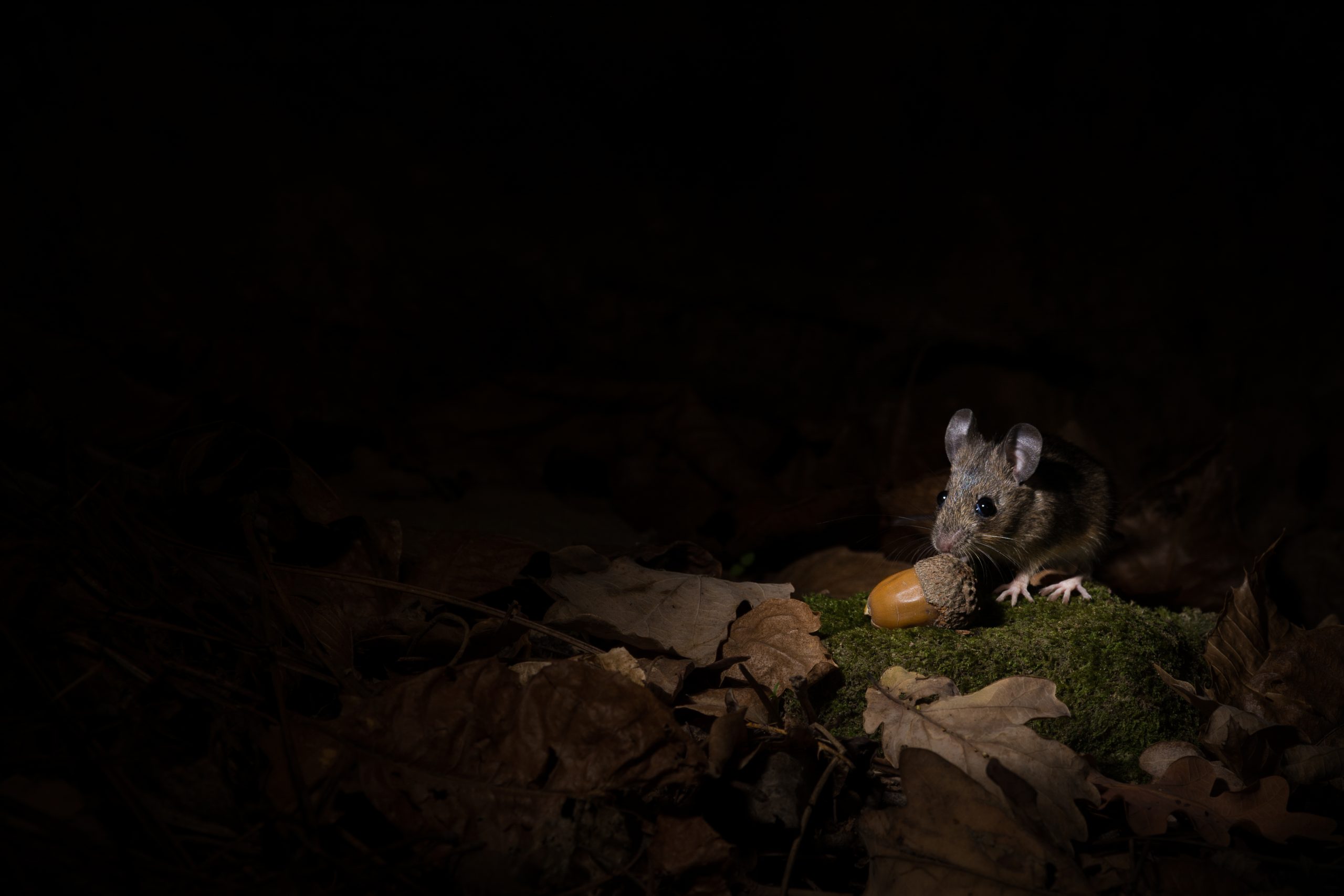Welcome to the new series of my blog – “Field Notes”. This series will consist of short texts in which I will explain how I managed to make some of my photographs. The goal is to share my experiences and ideas from the moment I idealize the image in my thoughts, until the moment when I finally get the final image.
In this first article, I write about one of my favourite photographs. This image was recently awarded an honourable mention in 2019 Cinclus photo contest and, for that reason, it seemed to me the obvious choice for the article.
Wild mice were a mystery to me and I have always wanted to photograph them, but I had no idea how to accomplish that. Everything changed when one day I found burrows in an natural wall made of earth. As soon as I saw them I thought they could be the work of wild mice and decided to left there sunflower seeds and see if any animals ate them. A few days later the seeds were gone and that was enough motivation for me to go back later in the afternoon and try to photograph these mysterious animals. To my surprise, on the first day, after about an hour of waiting, an Algerian mouse (Mus spretus) appeared, running around searching for food. Amazingly, these animals were extremely comfortable with my presence and on several occasions they approached my feet, curious about a creature they had probably never seen before. This was one of the images I got that day.

However, this image wasn’t enough for me. I wanted to do something more artistic and try different lighting. I wanted to backlit the mouse and so I went back to the place and prepared everything. I placed the flash behind a branch, at a slightly lower level, where I wanted the mouse to pass. After several hours and several nights of waiting, one of the mice finally passed where he wanted and I got the following image.

Although I’m happy with this photo, it still wasn’t what I was looking for, because I wanted to tell a story, more specifically I wanted the image to show when these animals are active, what they eat and the type of habitat they live in. In this area there are some oaks and it was autumn at that time, so there were a lot of acorns around. I thought to myself “it would be incredible if I could get a picture of a mouse with an acorn, at night and in its habitat”. I tried to understand if this species feeds on acorns and put one next to the burrow. And I got the confirmation, they indeed eat acorns. This image was made in a different way than the previous one. I wanted to illuminate just the area where the mouse was, leaving everything else in darkness. I used a snoot on the flash and placed it laterally in relation to the camera. Finally, I put an acorn in the spot where I expected the mouse to pass and I waited. After several nights of trying, I finally made it. This image was a culmination of months photographing a group of Algerian mice and although they are quite unpredictable sometimes, they are also extremely curious, intelligent and interesting animals and I still enjoy photographing them. It is a real pleasure to experience unique moments with these animals, which many find repulsive, but the reality is they are essential for the ecosystems.

Important note: the feeding of wild animals must be done carefully and not exaggerated. It is important that wild animals do not have daily access to easy food, because if one day that food is taken away they may not be able to find it in the wild. These mice were never fed in large quantities, I only put a few seeds a week. The area in question is already an area with great human pressure and, therefore, a little extra food will not have negative impacts on these mice, on the contrary. In addition, the seeds were hidden in the vegetation, so the animals don’t get accustomed to find food in the same place. I discourage any type of feeding in protected areas. Where human pressure is lower, we must not interfere with the feeding habits of wildlife. In the future I may write an article with my opinion on this subject.
Thank you for reading this article. If you have any questions or suggestions feel free to contact me.
